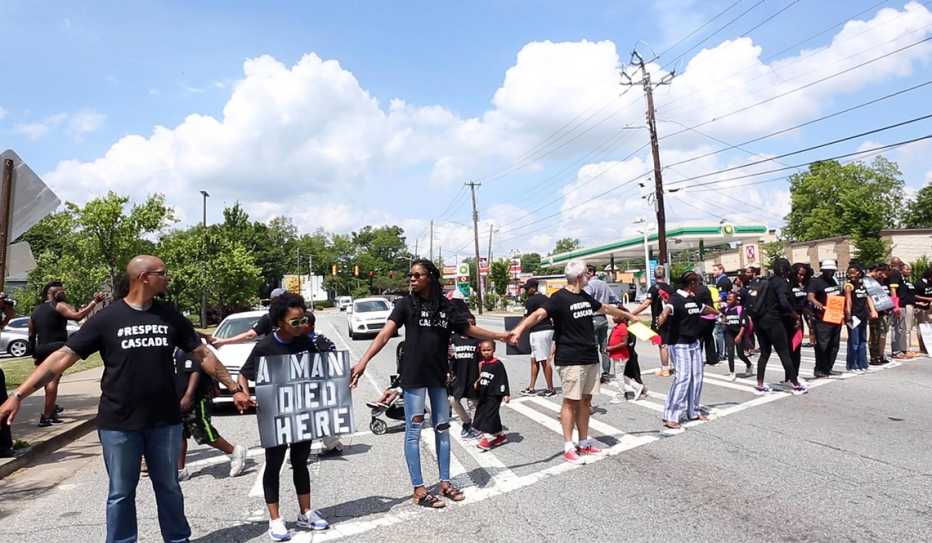AARP Hearing Center


The Community
Atlanta, Georgia, is a city of a half-million residents, more than half of whom are African American. About 10 percent of Atlantans are age 60 or older. Atlanta joined the AARP Network of Age-Friendly States and Communities in 2014 and adopted its action plan that same year.
Community Representative
- Sagirah Jones, Engagement Programs Manager, Atlanta Bicycle Coalition
Equity Focus
- Safe streets for all
The Work
Sagirah Jones describes how the Atlanta Bicycle Coalition — a leader in the city's age-friendly efforts to create safe streets for all — advocates for equitable access to sustainable transportation options and improved safety. The coalition, along with AARP Georgia and other partners, served on the Technical Advisory Committee for Atlanta’s 2018 Transportation Plan, advocated for the 2020 passage of the city’s Vision Zero ordinance.
Advocating for a Transportation System that is Safe and Works for Everyone
“Our Essential Transportation campaign urges the city of Atlanta to fully fund and rapidly build community supported, shovel-ready projects and to prioritize first- and last-mile connections for those who rely on transit," says Jones. "We called on the city to provide safe spaces for people walking or using wheelchairs, starting with any gaps in the sidewalk network along remaining MARTA bus routes and on streets accessing those bus routes. Since it can take years to get sidewalks built, we recommend that the city build 'tactical sidewalks,' which can use parking lanes and temporary materials to provide some protection now."
Partner Organizations
- AARP Georgia
- American Heart Association of Metro Atlanta
- Atlanta Bicycle Coalition
- Atlanta Department of Transportation
- Atlanta Families for Safe Streets
- Georgia STAND-UP
- PEDS
- TransFormation Alliance
- ThreadATL
Through its Community Advocates for Safe Streets program, the Atlanta Bicycle Coalition equips community members to have their voices heard by policymakers. "The goal," Jones explains, "is to mobilize an informed, effective and sustainable network of safe streets advocates, of all ages, from neighborhoods in every city council district, while prioritizing communities where there are high rates of traffic injuries and fatalities."
The advocacy efforts share common goals:
- Committing to achieving Vision Zero, where traffic fatalities are preventable through better street design and public education
- Engaging policymakers to enact actionable, design-driven and policy-focused solutions
- Creating safer streets and public spaces on high-injury street corridors by determining an equitable distribution of public transportation funds
- Advancing the mobility, safety, equity and affordability principles of the city's transportation plan
Community members can engage through the Atlanta Families for Safe Streets, which is the local chapter of the national Families for Safe Streets organization. They help the victims of traffic incidents — as well as the families whose loved ones have been killed or severely injured by reckless driving and dangerous conditions — to use their stories and experiences to advocate for change.
"Everyone of any age or ability should be able to use the sidewalk or bike down the street and feel like the street is for them."
— Resident of Atlanta's Westside
Since neighbors are often the most effective advocates for safe streets, the Community Advocates for Safe Streets program also engages residents through its Community Advocates Network (CAN) initiative. This network of neighborhood leaders, community members and business owners are provided resources and opportunities for interaction and information sharing so they can successfully participate in the civic process and advocate for an Atlanta where everyone moves safely, easily and sustainably.
Addressing Dangerous Streets in High-Injury Network Communities
The High-Injury Network consists of Atlanta streets where the majority of severe injury and fatal crashes occur. Less than 8 percent of Atlanta’s streets account for 88 percent of fatalities and 52 percent of severe injuries.
Overall, neighborhoods with streets in the network had lower median incomes, a larger share of Black residents, higher rates of walking and transit commutes and lower rates of vehicle ownership.
Atlanta’s Strategic Transportation Plan, which was adopted in 2019, shows that these same neighborhoods have some of the lowest sidewalk coverage in the city. In a recent update to the City Council, Atlanta's transportation department reported that only 45 percent of Atlanta's streets have sidewalks.
In response to these dangerous roadways, the Atlanta Bicycle Coalition created safe streets committees that are open to people who live, own businesses or have children that attend school along specific high-injury corridors. The coalition provides training and facilitates support so the committees can develop community-based, data-driven safety changes to their streets.
For instance, the newly launched committees for the Donald Lee Hollowell Parkway and Moreland Avenue have 15 diverse, age-friendly and committed community members from six city council districts.
Says Jones: "At the end of the first training session, one of our participants said, 'As a Westside resident and bike commuter, it's important to me for the streets in our community to serve all residents safely. Everyone of any age or ability should be able to use the sidewalk or bike down the street and feel like the street is for them.'”
Related Resources
- Atlanta Age-Friendly Action Plan
- Atlanta Bicycle Coalition
- Atlanta Bicycle Coalition 2018-2019 Impact Report
- Atlanta Bicycle Coalition Community Advocates for Safe Streets
- Atlanta Bicycle Coalition Essential Transportation campaign
- Atlanta’s Transportation Plan
- High-Injury Network
- One Atlanta: Strategic Transportation Plan
- Vision Zero Network
AARP Links
- Learn about the AARP Network of Age-Friendly States and Communities
- Check out the network's Member List
- Connect with AARP Georgia
- Find Age-Friendly Responses to COVID-19
- Age-Friendly Network Communities and Equity
Reported by Mary Kay Bailey | Fall 2020 | Population data from the U.S. Census





























































